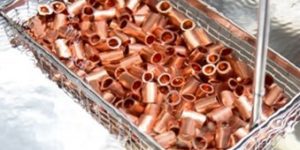Understanding and Lowering Weld Costs
Nick Peterson of Miller Electric explains why shops stand to reap significant benefits by better understanding and controlling whether step B in the process is truly preparation for step C, or simply compensation for the inefficiency of step A.
Posted: March 29, 2013
Shops stand to reap significant benefits by better understanding and controlling whether step B in the process is truly preparation for step C, or simply compensation for the inefficiency of step A. Here’s why.
Given that labor typically accounts for 60 to 85 percent of the total cost of any welding operation, manufacturers stand to reap significant benefits by better understanding and controlling those costs. However, that’s often easier said than done.
Too often, shops make the mistake of seeking to increase productivity by simply adding additional welding cells rather than looking for ways to maximize welder efficiency. But in order to fully understand the true cost of a welding operation, a shop must look not just at the weld cell, but at the upstream and downstream operations to see if labor is unnecessarily wasted in non-value added activities.
While many portions of the welding operation are absolutely essential, there are also ways that companies can lower the labor costs in the welding operation by reducing or eliminating the time consumed on the activities listed below:
- Preparing the metal for welding
- Preparing the joint
- Applying anti-spatter
- Pre-heating time
- Positioning and repositioning the weldment
- Grinding spatter and chipping slag
- Removing anti-spatter
- Repairing and/or reworking welds that don’t pass inspection
- Gas cylinder swap outs
- Changing filler metals
- Grinding and/or polishing weld to obtain final appearance
One of the most reliable ways to spot waste in a system, and thus tackle many of the time consuming activities above, is to answer the following question:
Is step B in a process truly preparation for step C, or is it compensation for the inefficiency of step A?
For example, spending time grinding spatter and chipping slag might seem like a necessary part of any welding operation, but in many cases improvements in power source and welding wire technologies eliminate the need for these activities.
For example, an equipment manufacturer employed two full-time employees per shift to grind and otherwise prepare weldments for the next step in the production process. This activity cost the manufacturer roughly $2,000 per week at $25 per hour for labor.
















